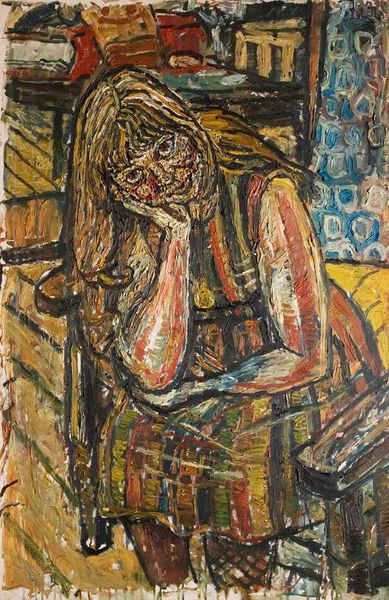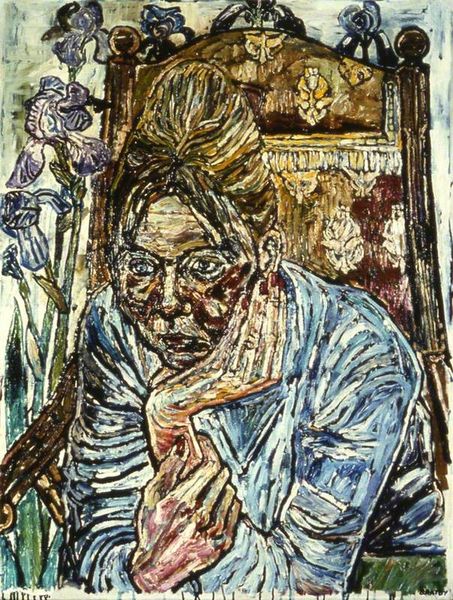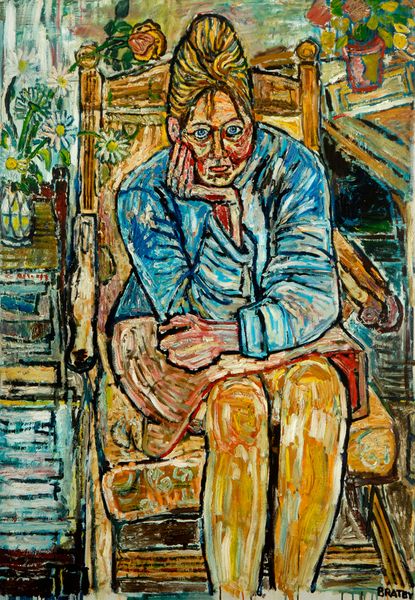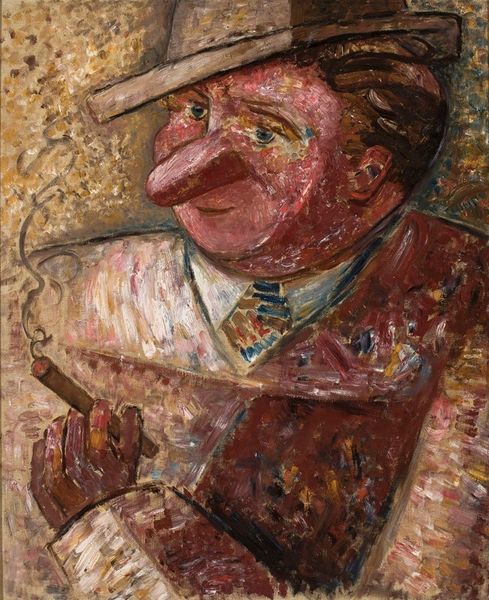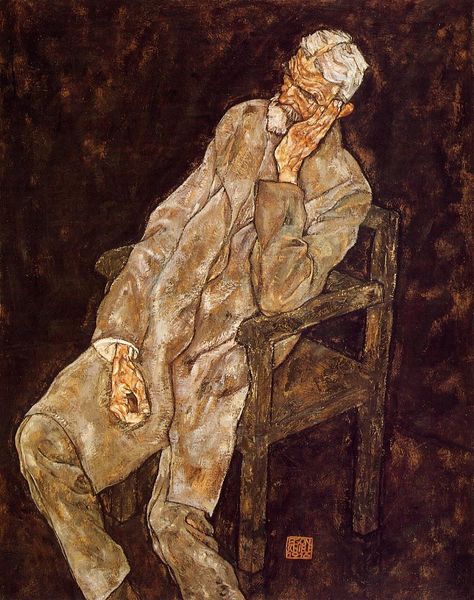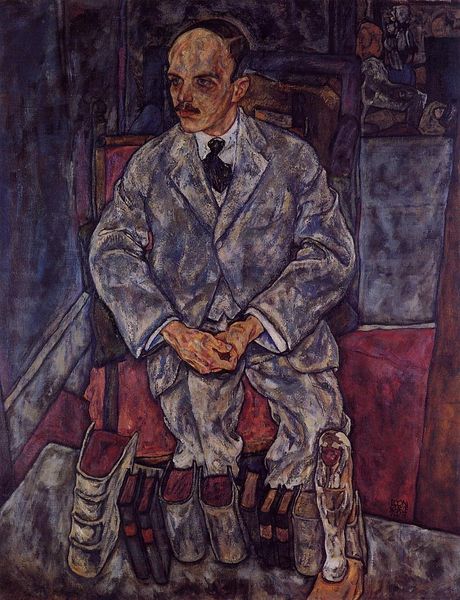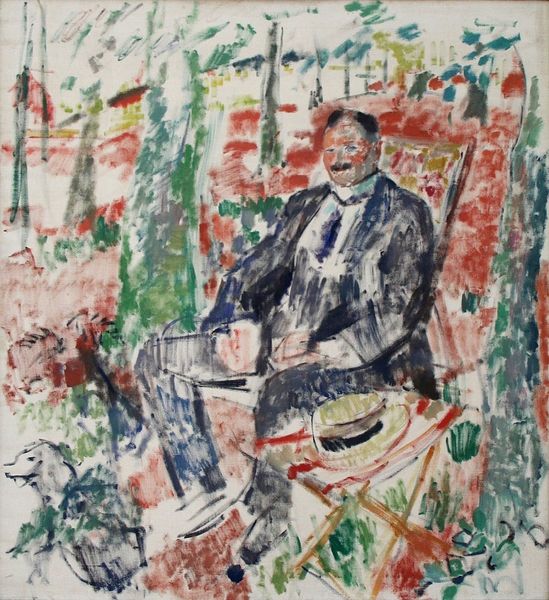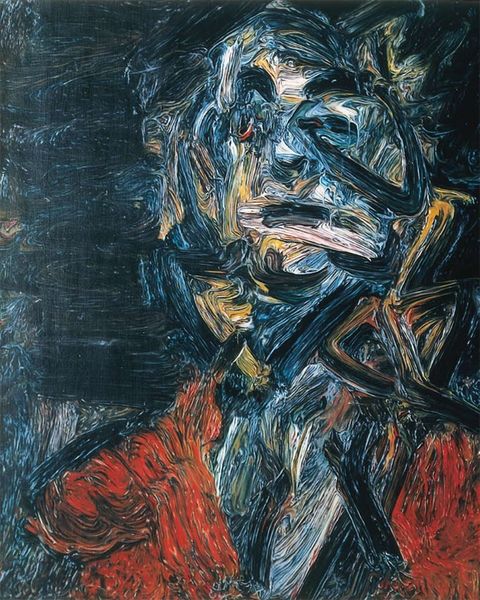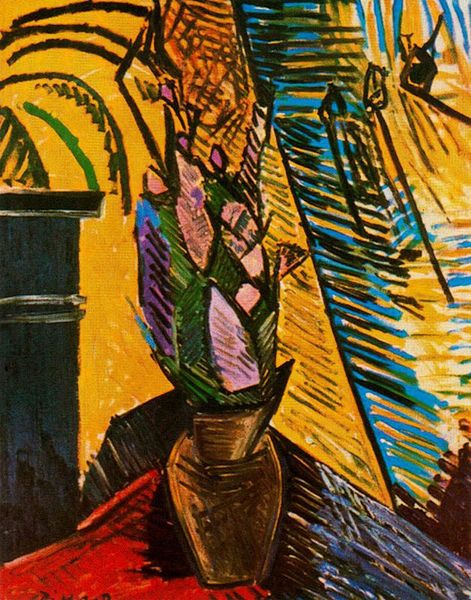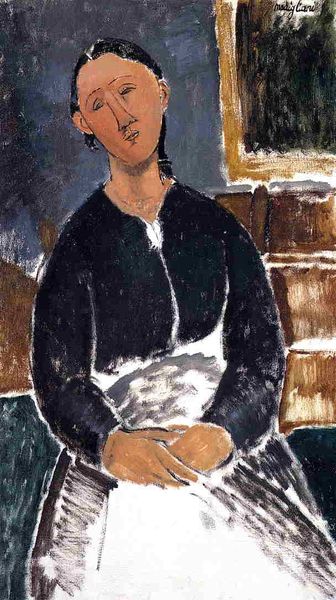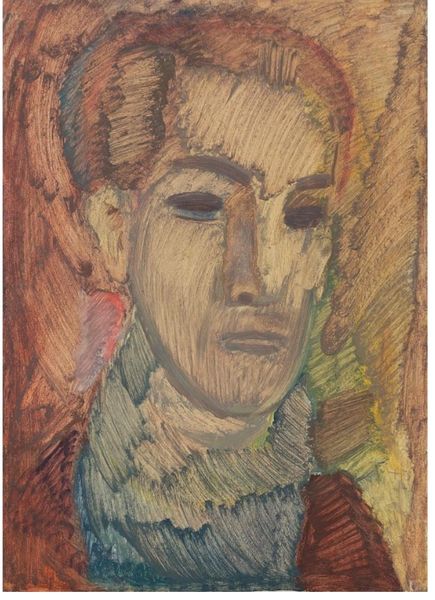
Copyright: John Bratby,Fair Use
Curator: I see an assertiveness in the angular brushstrokes of this 1960 oil painting by John Bratby, "Girl with a Rose in Her Lap". Editor: It evokes a feeling of unease; almost as if the sitter is weary, worn down. But the rose gives it a fragile sense of hope. Curator: Indeed. Roses themselves are rife with cultural weight, from emblems of romantic love and beauty to symbols of secrecy or even war. Placed in her lap, amidst her domestic surroundings, it suggests a potent intermingling of personal experience and societal expectations. Her guarded pose could reflect a wariness of outside forces threatening that personal space. Editor: I find her crossed arms particularly compelling; they denote a sense of self-possession, a defense against what may be read as intrusion. Considering the patriarchal dynamics present in 1960s Britain, one might interpret her body language as silent defiance. Curator: Consider also her gaze—direct and unwavering, meeting ours without flinching. It's a confrontational act, disrupting the passivity usually imposed on the female figure in portraiture. Notice how the bold use of impasto gives a palpable sense of texture. The roses are not merely ornamental; they speak to beauty under pressure. Editor: The roses' symbolic nature resonates through a socio-political lens. We can consider their visual ties with feminist symbolism, which emphasizes reclaiming femininity by exploring female desire and identity—all expressed via domestic objects often coded as 'feminine'. The setting seems to be a stage of sorts. Curator: I can see how this representation questions gender expectations and their associated societal restraints. And despite being hemmed by heavy textures, the central figure anchors the composition as she firmly asserts her own narrative. The flowers seem almost defiant on her lap. Editor: This image prompts necessary conversations regarding autonomy, perception, and representation in post-war society. Ultimately, it reveals more than just the sitter's identity, it reveals tensions simmering just beneath the surface of domestic tranquility. Curator: It's fascinating how Bratby infuses common motifs with complex, personal stories, asking us to question surface-level interpretations and engage with a deeper socio-historical context.
Comments
No comments
Be the first to comment and join the conversation on the ultimate creative platform.
